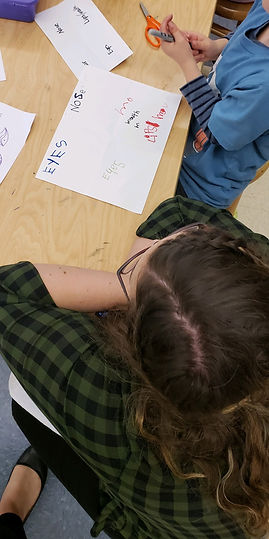

Teaching Philosophy
One of the best things a person can receive is an education. Art is one of the most important ways people tell us how they view the world. Children's natural abilities can be lost when art teachers impose only adult-centered concepts and artworks. Art education encourages the ability to value oneself and others, and to approach the world with a desire to understand. Instructing students on political, socio-economic, and environmental influences that affect our artmaking will allow them to think considerately beyond the classroom.
It is essential for teachers and artists, including students, to work together to explore their own stories and backgrounds. This can be achieved through critical multicultural art education. Exploring the contribution of diverse artists to the world community opens children's beliefs and encourages pride in being an artist. Art should be studied and made for both its expressive power and its possible social meaning and should be instructed in a safe, inclusive space.
While my position often suggests and requires an authoritative role, I would also like to assume the position of a facilitator and a student as well. I consider life long learning part of my philosophy, so I strive to be open to learning from my students to build my capacity to grow as an educator. I believe learning by doing offers students a different way to think, problem-solve, and be creative. I am constantly reflecting on my lessons and ideas and teaching style so that I can be the teacher my students need me to be. In order to create a safe, excelling, inclusive learning environment for my students, I will constantly be evolving to meet their needs, and learning from my mistakes.
In my class, I want to invite risk-taking and collaboration in art making and art thinking that questions the status quo and searches for personal or social truths. Ideally, art should be connected to other academic disciplines. With interdisciplinary studies and collaboration between teachers, students can explore the concept of a cohesive community interweaving the arts with literature, history, the environment, and much more. Connecting and collaborating with other educators and subjects will help engage students and gain interest and respect for the importance of arts.
I would feel satisfied if in twenty years, my former students remembered my classroom as being not only a place to make art, but a place they felt safe and comfortable, as well as a place that learned about the forms and processes of artmaking. There is so much to learn and I am very excited to continue learning and teaching.